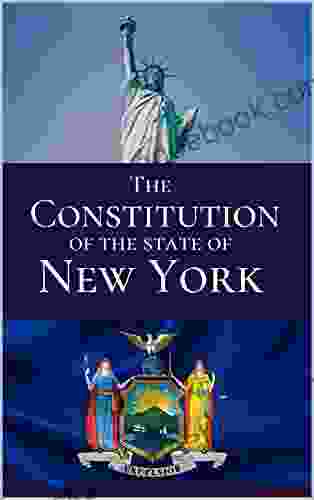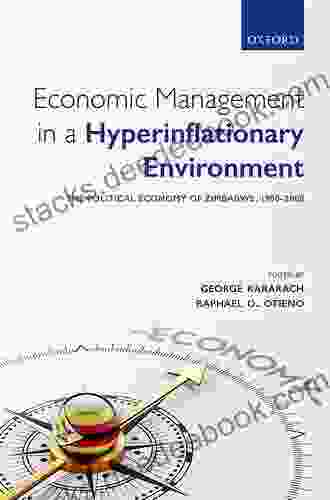Navigating Economic Management in Hyperinflationary Environments: An In-Depth Exploration

Hyperinflation, characterized by an extremely rapid and out-of-control surge in prices, presents a daunting economic challenge with severe consequences for individuals, businesses, and governments. Understanding the intricacies of economic management in such an environment is paramount for mitigating its detrimental effects and safeguarding financial stability. This article delves into the complexities of hyperinflation, exploring its causes, consequences, and effective management strategies.
Hyperinflation occurs when the inflation rate exceeds 50% per month or 100% per year, rendering a country's currency nearly worthless. It typically stems from a combination of factors, including:
- Excessive Money Creation: Central banks can fuel hyperinflation by printing excessive amounts of money, exceeding the real growth in output and demand.
- Government Deficit Spending: Large fiscal deficits, combined with insufficient revenue, can lead to the government borrowing heavily from the central bank, resulting in monetary expansion.
- Supply Shocks: Economic disruptions, such as wars, natural disasters, or supply chain disruptions, can severely reduce the availability of goods and services, leading to price increases.
- Loss of Confidence in Currency: As inflation spirals out of control, individuals and businesses lose confidence in the currency, hoarding goods and driving prices even higher.
Hyperinflation has profound negative consequences for an economy:
4.5 out of 5
| Language | : | English |
| File size | : | 11142 KB |
| Print length | : | 592 pages |
| Lending | : | Enabled |
| Screen Reader | : | Supported |
| X-Ray for textbooks | : | Enabled |
- Erosion of Purchasing Power: Rapid inflation erodes the value of savings, wages, and pensions, impoverishing individuals and households.
- Business Disruption: Hyperinflation disrupts businesses, as rising costs make planning and investment difficult. It can lead to shortages and inefficiencies in production.
- Social Unrest: Economic hardship caused by hyperinflation can lead to social unrest, protests, and political instability.
- Currency Collapse: In extreme cases, hyperinflation can result in the collapse of the currency, rendering it essentially worthless.
Managing hyperinflation requires a comprehensive and multifaceted approach:
- Monetary Discipline: Central banks need to exercise monetary discipline by controlling the money supply and raising interest rates to curb inflation.
- Fiscal Discipline: Governments must implement sound fiscal policies, reducing budget deficits and cutting spending to limit the need for excessive borrowing.
- Stabilization Measures: Governments may implement price controls and rationing to contain inflation, although these measures can have unintended consequences.
- Structural Reforms: Addressing underlying economic imbalances, such as improving productivity and reducing supply chain bottlenecks, can help stabilize the economy.
- Exchange Rate Adjustment: In some cases, adopting a fixed exchange rate or a currency board can stabilize the currency and limit inflation.
- International Assistance: In extreme situations, countries may seek financial assistance from international organizations, such as the International Monetary Fund, to address hyperinflation.
- Germany (1920s): After World War I, Germany faced severe hyperinflation due to excessive war reparations and monetary expansion.
- Zimbabwe (2000s): Mismanagement, political instability, and currency printing led to hyperinflation exceeding 230 million percent per year.
- Venezuela (2010s): Economic mismanagement and government deficits caused hyperinflation exceeding 1 million percent per year.
Hyperinflation poses a significant economic challenge, jeopardizing financial stability and the well-being of individuals and businesses. Understanding its causes and consequences is essential for policymakers and economic managers. Implementing sound economic management strategies, such as monetary discipline, fiscal restraint, and structural reforms, is crucial for containing inflation and safeguarding financial health. International cooperation and assistance can also play a vital role in stabilizing hyperinflationary economies. By addressing hyperinflation effectively, governments and central banks can restore economic stability, protect citizens' purchasing power, and foster sustainable economic growth.
4.5 out of 5
| Language | : | English |
| File size | : | 11142 KB |
| Print length | : | 592 pages |
| Lending | : | Enabled |
| Screen Reader | : | Supported |
| X-Ray for textbooks | : | Enabled |
Do you want to contribute by writing guest posts on this blog?
Please contact us and send us a resume of previous articles that you have written.
 Book
Book Novel
Novel Page
Page Chapter
Chapter Story
Story Genre
Genre Library
Library Paperback
Paperback Paragraph
Paragraph Sentence
Sentence Shelf
Shelf Foreword
Foreword Preface
Preface Annotation
Annotation Footnote
Footnote Manuscript
Manuscript Tome
Tome Classics
Classics Library card
Library card Autobiography
Autobiography Memoir
Memoir Reference
Reference Encyclopedia
Encyclopedia Thesaurus
Thesaurus Librarian
Librarian Catalog
Catalog Stacks
Stacks Periodicals
Periodicals Study
Study Research
Research Reserve
Reserve Special Collections
Special Collections Study Group
Study Group Thesis
Thesis Dissertation
Dissertation Storytelling
Storytelling Awards
Awards Reading List
Reading List Theory
Theory Textbooks
Textbooks Madhavi Nawana Parker
Madhavi Nawana Parker Mitch Peeke
Mitch Peeke Michael Kimmage
Michael Kimmage Gregory Fite
Gregory Fite Adrian Magson
Adrian Magson Kirsty Applebaum
Kirsty Applebaum Adrian Urban
Adrian Urban James Gilligan
James Gilligan Cyrus Parsa
Cyrus Parsa Vlado Damjanovski
Vlado Damjanovski Rob Pate
Rob Pate Cathy Marie Buchanan
Cathy Marie Buchanan Theo Christodoulou
Theo Christodoulou Leisa Wallace
Leisa Wallace Edwin C Hagenstein
Edwin C Hagenstein Beila Pire De Bastidas
Beila Pire De Bastidas Herb Parker
Herb Parker Yajna Raj Satyal
Yajna Raj Satyal Amanda Haas
Amanda Haas Francis J Gavin
Francis J Gavin
Light bulbAdvertise smarter! Our strategic ad space ensures maximum exposure. Reserve your spot today!
 Casey BellFollow ·4.8k
Casey BellFollow ·4.8k Jerry WardFollow ·17.2k
Jerry WardFollow ·17.2k Yukio MishimaFollow ·3.8k
Yukio MishimaFollow ·3.8k Anthony WellsFollow ·14.4k
Anthony WellsFollow ·14.4k Jake CarterFollow ·7.1k
Jake CarterFollow ·7.1k Victor TurnerFollow ·4.3k
Victor TurnerFollow ·4.3k James GrayFollow ·18.1k
James GrayFollow ·18.1k Jeremy CookFollow ·7.8k
Jeremy CookFollow ·7.8k

 Amir Simmons
Amir SimmonsMore Zeal Than Discretion: A Closer Look at the Risks and...
Enthusiasm is often seen as a positive...

 Wayne Carter
Wayne CarterYear of the Dog: American Poets Continuum 178
Year of the Dog is a...

 David Foster Wallace
David Foster WallaceThe Constitution of the State of New York: A...
The Constitution of the...

 Harvey Bell
Harvey BellSmall Cetaceans of Japan: Exploitation and Biology
Small cetaceans, including...

 Blake Bell
Blake BellEffortless Elegance: A Comprehensive Guide to Captivating...
In the realm of crocheting,...
4.5 out of 5
| Language | : | English |
| File size | : | 11142 KB |
| Print length | : | 592 pages |
| Lending | : | Enabled |
| Screen Reader | : | Supported |
| X-Ray for textbooks | : | Enabled |














